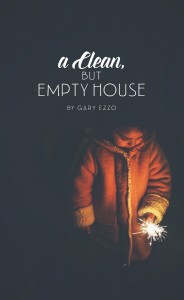There is an interesting analogy introduced in Matthew 12:43. There we are told of a demon who went out from a man, but over time decides to return, and when he does, he finds his old dwelling place swept clean. So the demon goes out and finds seven more like himself to come and live in the man.
goes out and finds seven more like himself to come and live in the man.
Here is what we know about this parable. A demon was sent out from a man, the man’s house was swept clean, but the house remained empty. Certainly, by implication, there is a moral message here and a parenting lesson. No parent finds pleasure in watching their children misbehave or act offensively towards others, and what Mom or Dad does not step in, at some point, to bring correction to those moments?
Although unintentionally, many parents do most of their moral training during times of correction when they are pointing out what their child did wrong—and stop right there. There is a tendency to say, “That is wrong!” “Don’t do that again,” “You’re going to be punished.”
Surely, these are diligent parents hoping to weed out unwelcomed behaviors. However, parents should not measure their child’s heart solely by the wrong that is present, but by the amount of virtue that is absent. If a parent’s primary focus is on what their children do wrong, accompanied by the warning of what not to do the next time, and not balanced with instruction that teaches what is right and what the child should do, then ultimately the only thing a parent is doing is sweeping the house clean of behavioral “demons.” The house is still empty! It needs to be backfilled with virtues and values. If that is not routinely happening, then the only thing a child is learning is that “being good” means “not doing anything wrong,” and that is the wrong message to be sending.
All children should learn what ”to do” as much as what ”not to do.” For example, it is not enough to teach a child not to take a toy from another child without asking. One sweeps the house clean; the other fills the house with virtue. It is not enough to lecture a child as to why acting meanly or cruelly is wrong; that teaching must be matched by what kindness looks like. The first sweeps the house clean; the other fills the house with virtue. Suppressing rude behavior in children is not the same as teaching and encouraging deference and courtesy. Restraining wrong behavior must be offset by elevating good and virtuous behavior. Both are required in the training process.
This article is used with permission from Growing Families International and found at www.growingfamiliesusa.com.




Leave a Reply